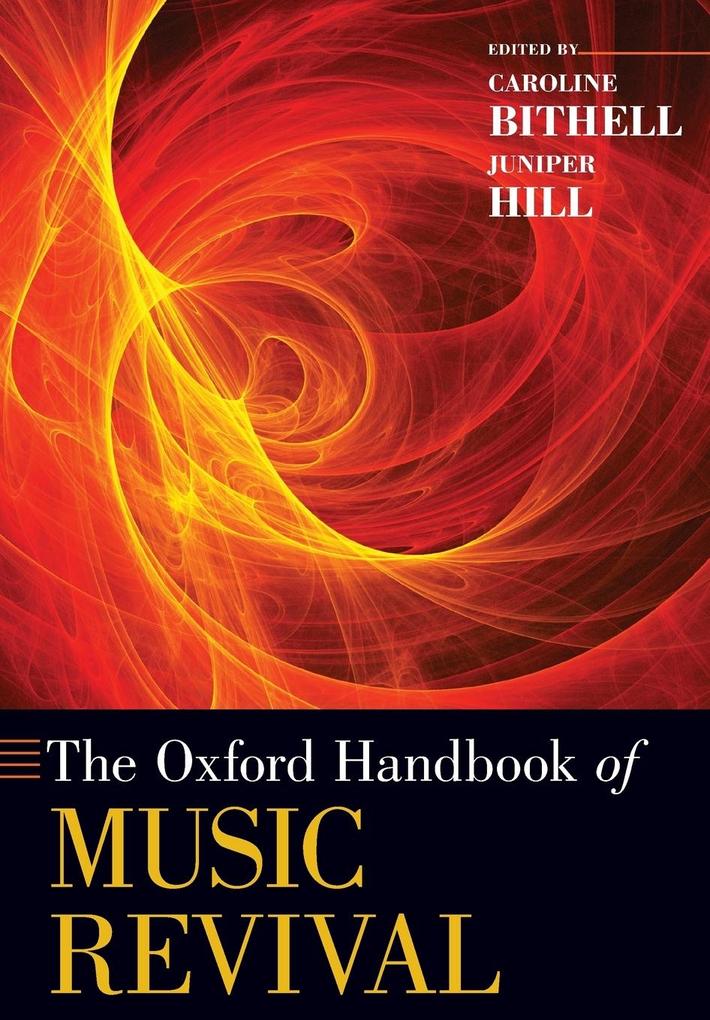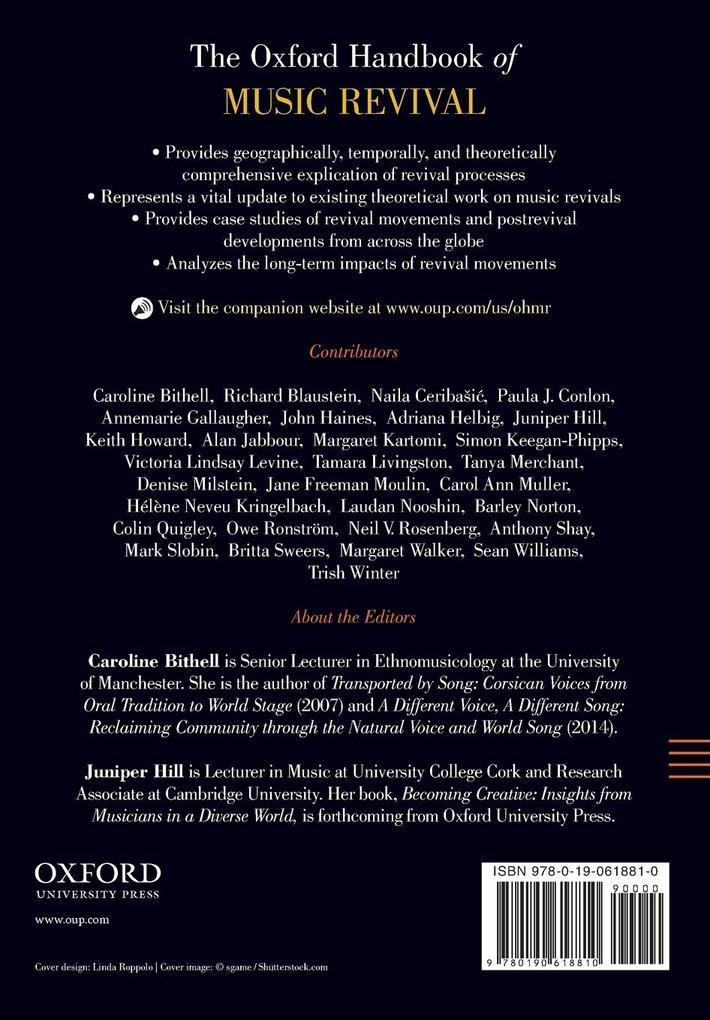
Zustellung: Do, 24.07. - Mo, 28.07.
Versand in 5 Tagen
VersandkostenfreiBestellen & in Filiale abholen:
Revival movements aim to revitalize traditions perceived as threatened or moribund by adapting them to new temporal, spatial, and social contexts. While many of these movements have been well-documented in Western Europe and North America, those occurring and recurring elsewhere in the world have received little or no attention. Particularly under-analyzed are the aftermaths of revivals: the new infrastructures, musical styles, performance practices, subcultural communities, and value systems that grow out of these movements.
Inhaltsverzeichnis
- Table of Contents
- I. Towards Multiple Theories of Music Revival
- 1. An Introduction to Music Revival as Concept, Cultural Process, and Medium of Change
- Juniper Hill and Caroline Bithell
- 2. Traditional Music, Heritage Music
- Owe Ronström
- 3. An Expanded Theory for Revivals as Cosmopolitan Participatory Musicmaking
- Tamara Livingston
- II. Scholars and Collectors as Revival Agents
- 4. Antiquarian Nostalgia and the Institutionalization of Early Music
- John Haines
- 5. A Folklorist's Exploration of the Revival Metaphor
- Neil V. Rosenberg
- 6. A Participant-Documentarian in the American Instrumental Folk Music Revival
- Alan Jabbour
- III. Intangible Cultural Heritage, Preservation, and Policy
- 7. Reviving Korean Identity through Intangible Cultural Heritage
- Keith Howard
- 8. Music Revival, Ca Trù Ontologies and Intangible Cultural Heritage in Vietnam
- Barley Norton
- 9. The Hungarian Dance House Movement and Revival of Transylvanian String Band Music
- Colin Quigley
- IV. National Renaissance and Postcolonial Futures
- 10. National Purity and Postcolonial Hybridity in India's Kathak Dance Revival
- Margaret Walker
- 11. Choreographic Revival, Elite Nationalism and Regional Appropriation in Senegambia, 1930-2010
- Hélène Neveu Kringelbach
- 12. Revived Musical Practices within Uzbekistan's Evolving National Project
- Tanya Merchant
- 13. Two Revivalist Moments in Iranian Classical Music
- Laudan Nooshin
- 14. Reclaiming Choctaw and Chickasaw Cultural Identity through Music Revival
- Victoria Levine
- V. Recovery from War, Disaster, and Cultural Devastation
- 15. Revivalist Articulations of Traditional Music in War and Post-War Croatia
- Naila Ceribasi?
- 16. Cultural Rescue and Musical Revival among the Nicaraguan Garifuna
- Annemarie Gallaugher
- 17. Toward a Methodology for Research into the Revival of Musical Life after War, Natural Disaster, Bans on all Music, or Neglect
- Margaret Kartomi
- VI. Innovations and Transformations
- 18. Innovation and Cultural Activism through the Re-imagined Pasts of Finnish Music Revivals
- Juniper Hill
- 19. Revival Currents and Innovation on the Path from Protest Bossa to Tropicália
- Denise Milstein
- 20. Bending or Breaking the Native American Flute Tradition?
- Paula Conlon
- 21. Towards an Application of Globalization Paradigms to Modern Folk Music Revivals
- Britta Sweers
- VII. Festivals, Marketing, and Media
- 22. Contemporary English Folk Music and the Folk Industry
- Simon Keegan-Phipps and Trish Winter
- 23. Ivana Kupala (St. John's Eve) Revivals as Metaphors of Sexual Morality, Fertility, and Contemporary Ukrainian Femininity
- Adriana Helbig
- 24. Trailing Images and Culture Branding in Post-Renaissance Hawai'i
- Jane Freeman Moulin
- 25. Grassroots Revitalization of North American and Western European Instrumental Music Traditions from Fiddlers Associations to Cyberspace
- Richard Blaustein
- VIII. Diaspora and the Global Village
- 26. Georgian Polyphony and its Journeys from National Revival to Global Heritage
- Caroline Bithell
- 27. Irish Music Revivals Through Generations of Diaspora
- Sean Williams
- 28. Reviving the Reluctant Art of Iranian Dance in Iran and in the American Diaspora
- Anthony Shay
- 29. Musical Remembrance, Exile, and the Remaking of South African Jazz (1960-1979)
- Carol Ann Muller
- Afterword
- 30. Re-flections
- Mark Slobin
Produktdetails
Erscheinungsdatum
01. Juni 2016
Sprache
englisch
Seitenanzahl
716
Herausgegeben von
Caroline Bithell, Juniper Hill
Verlag/Hersteller
Produktart
kartoniert
Gewicht
1213 g
Größe (L/B/H)
244/170/38 mm
ISBN
9780190618810
Entdecken Sie mehr
Bewertungen
0 Bewertungen
Es wurden noch keine Bewertungen abgegeben. Schreiben Sie die erste Bewertung zu "Oxford Handbook of Music Revival" und helfen Sie damit anderen bei der Kaufentscheidung.










